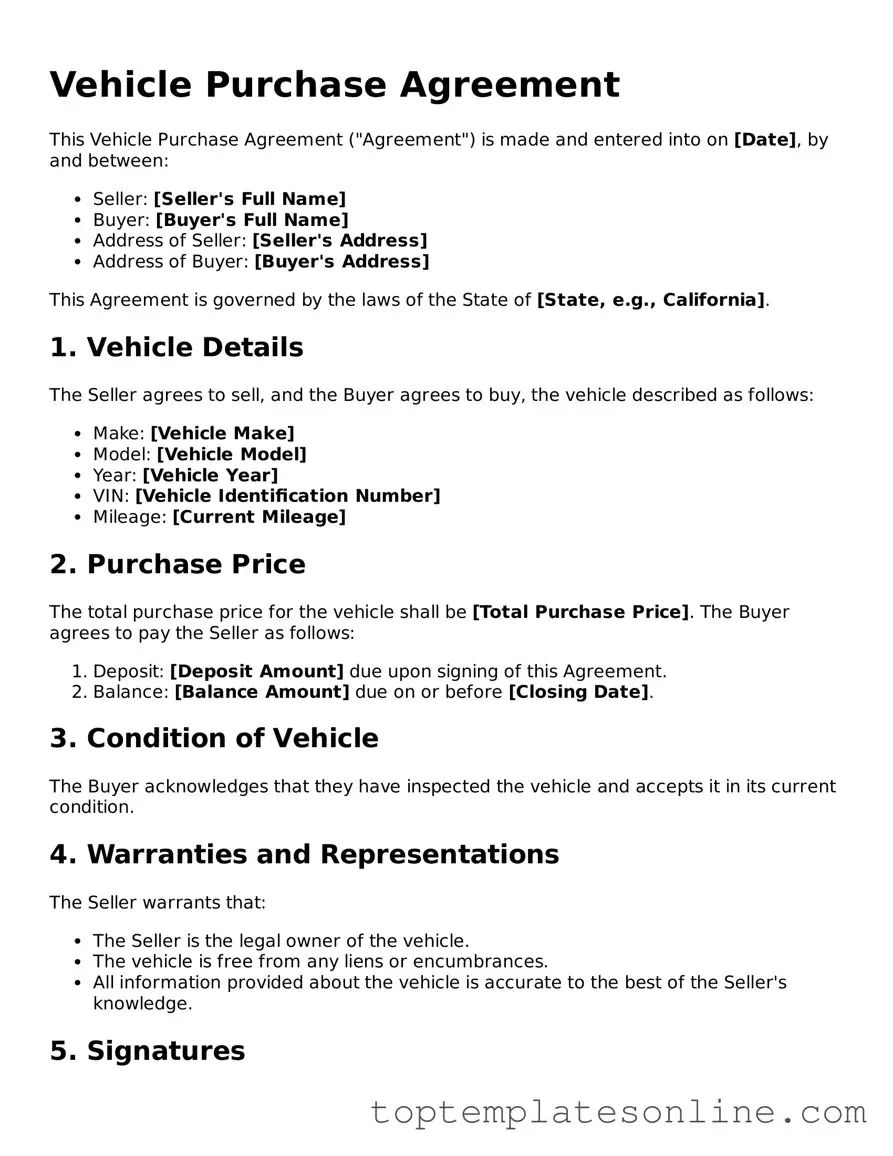Attorney-Approved Vehicle Purchase Agreement Form
A Vehicle Purchase Agreement is a legal document that outlines the terms and conditions of a vehicle sale between a buyer and a seller. This form serves to protect both parties by clearly detailing the obligations and rights involved in the transaction. Understanding this agreement is crucial for anyone looking to buy or sell a vehicle, as it helps ensure a smooth transfer of ownership.
Customize Vehicle Purchase Agreement Here
